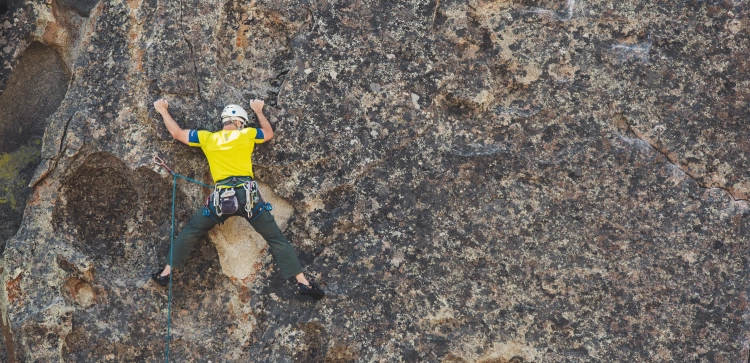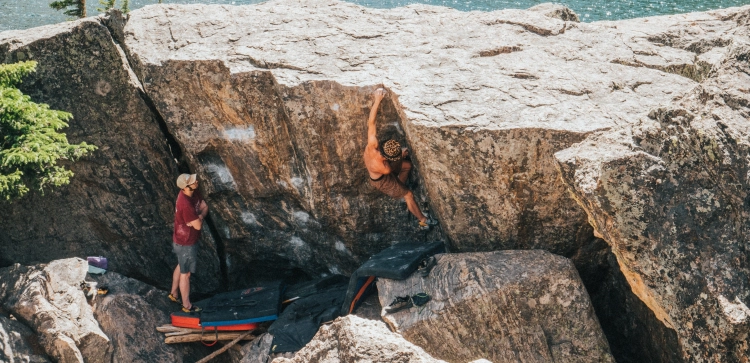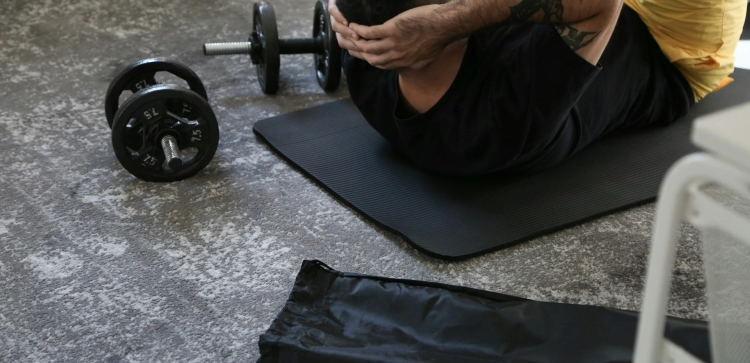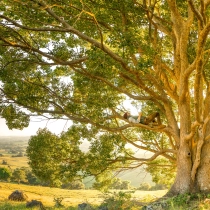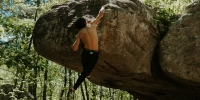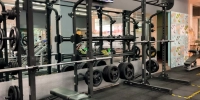Climbing Strength & Fitness: Master Muscles, Boost Performance

Climbing is a unique and demanding sport that challenges both body and mind. While often perceived as an activity primarily relying on brute upper body strength, the truth is far more nuanced. To truly excel on the rock or in the gym, climbers need a holistic approach to physical development. This comprehensive guide will explore the profound impact of climbing on overall fitness, demystify specific strength requirements, delve into the critical roles of key muscle groups, and highlight how smart training, including strategic cross-training, can unlock your full climbing potential.
- The Full-Body Impact Of Climbing: More Than Just Arms
- Understanding Strength Requirements In Climbing
- Key Muscle Groups For Climbing Performance
- Upper Body Strength: Beyond The Pull-Up Myth
- Core Power: The Foundation Of Climbing
- Leg Drive: The Unsung Hero Of Climbing
- The Importance Of Balance, Technique, And Efficiency
- Optimizing Your Training: The Role Of Cross-Training
- Conclusion
- FAQ: Your Common Climbing Strength & Fitness Questions
- Does Bouldering Build Muscle?
- Is Upper Body Strength The Most Important Thing In Rock Climbing?
- Do I Need To Be Strong To Start Climbing Or Bouldering?
- What Is The Role Of Core Strength In Climbing?
- Why Is Leg Strength Important In Climbing?
- What Are The Benefits Of Cross-training For Climbers?
- What Muscle Groups Does Climbing Work?
The Full-Body Impact of Climbing: More Than Just Arms
Climbing is a uniquely demanding physical activity that engages virtually every muscle in the body, contributing to significant and well-rounded improvements in overall physical fitness. It's a dynamic pursuit that sculpts a balanced physique combining power, endurance, and grace, making it a transformative activity for both physical and mental strength.
Muscle-Building Effects: How Climbing Sculpts Functional Strength
Bouldering and climbing are remarkably effective for building lean, functional strength without necessarily leading to the excessive bulk often associated with traditional weightlifting. Unlike isolated exercises, climbing forces the body into complex, coordinated movements that recruit multiple muscle groups simultaneously, promoting real-world strength and athletic capabilities.
-
Engages Diverse Muscle Groups & Fiber Types: Climbing constantly recruits a wide array of muscles, from the intricate flexors of your fingers and the powerful muscles of your forearms, to the large muscle groups of your back (lats, rhomboids, trapezius), shoulders (deltoids, rotator cuff), arms (biceps, triceps), core (abdominals, obliques, lower back), and legs (quads, hamstrings, glutes, calves). This continuous engagement, often under high tension, leads to microscopic tears (microtraumas) in muscle fibers. The body's subsequent repair process fosters muscle growth (hypertrophy) and increased strength over time. Depending on the climbing style and intensity—whether sustained endurance climbs or explosive bouldering moves—it promotes the development of both slow-twitch (for endurance and sustained effort) and fast-twitch (for explosive power and dynamic movements) muscle fibers, contributing to a truly well-rounded athletic profile.
-
Enhances Functional Fitness: The strength gained from climbing is inherently functional. It translates directly to improved balance, coordination, agility, and proprioception (awareness of your body in space). These skills are not only highly beneficial on the climbing wall but also enhance overall athleticism in daily life.
-
Cardiovascular Fitness & Metabolic Efficiency: Climbing, especially sustained efforts on routes or dynamic bouldering sequences, significantly elevates heart rate. This provides an excellent cardiovascular workout, improving heart health and increasing endurance. It mimics high-intensity interval training (HIIT), enhancing metabolic efficiency and leading to significant caloric expenditure, which can contribute to effective weight management and balanced muscle development.
-
Mental Resilience & Cognitive Function: Beyond the profound physical benefits, climbing demands intense focus, problem-solving, and concentration. Navigating complex sequences, managing fear, and pushing physical limits contribute to improved cognitive function, heightened mental resilience, and a unique sense of accomplishment.
Understanding Strength Requirements in Climbing
Embarking on a climbing journey, especially into bouldering, warmly welcomes climbers of all fitness levels. While prior strength can certainly be advantageous, it is by no means a strict prerequisite. In fact, bouldering offers an exceptional opportunity to build the necessary strength as you climb and progress, making it accessible even if you're just starting out without a history of intense athletic training.
For beginners, developing a solid foundational level of full-body strength and, crucially, fundamental climbing technique is far more important than obsessing over raw, extreme power. As you consistently engage with the sport, your body and its strength will naturally adapt to the unique demands of climbing.
Avoiding Overemphasis on Strength: A common misconception, particularly among beginners, is that raw strength is the sole determinant of success. Interestingly, relying too heavily on brute power without developing sound technique can sometimes hinder progress and even lead to inefficient climbing patterns and potential injuries. For example, you might be able to 'power through' a V5 boulder problem solely by muscling your way through it. However, a more experienced climber might approach the same problem with fluid technique, precise footwork, and minimal brute force, making it look effortless. True climbing success isn't solely defined by physical strength; it's a dynamic combination of strength, refined technique, impeccable balance, astute mental focus, and sheer determination. Prioritizing technique alongside strength development is paramount for preventing inefficient climbing habits and reducing the risk of overuse injuries. The ultimate goal is to climb intelligently and efficiently, not just powerfully.
Key Muscle Groups for Climbing Performance
While climbing inherently works the entire body, certain muscle groups bear a disproportionate load and play exceptionally critical roles in pulling, pushing, stabilizing, and moving effectively on the vertical plane.
Upper Body Strength: Beyond the Pull-Up Myth
The pervasive myth that rock climbing solely relies on immense upper body strength often leads newcomers to believe that if they can't do a certain number of pull-ups, they can't climb. While strong upper body muscles are undeniably important and highly beneficial, they are part of a larger, intricately interconnected system. The truth is, climbing is in no way exclusive to these muscles; success is determined by your ability to combine strength with technique, balance, body positioning, and overall fitness.
-
Crucial for Pulling, Holding, and Dynamic Movement: Strong shoulders, powerful back muscles (especially the latissimus dorsi, rhomboids, and trapezius), and robust arms (biceps, triceps) are absolutely essential. They enable you to pull yourself up the wall, hang onto challenging holds, maintain tension through difficult sections, and execute dynamic moves like dynos or deadpoints with control and precision.
-
The Critical Role of Strong Shoulders: Shoulder strength and stability are particularly significant, contributing to virtually every move, hold, and ascent. Strong shoulders enable climbers to effectively leverage holds, maintain stable body positions, and smoothly execute challenging sequences. A solid foundation of shoulder power allows climbers to climb with greater confidence and efficiency, facilitating controlled precision in movements and making challenging overhangs and powerful pulls more manageable. Furthermore, strong shoulders contribute significantly to endurance by distributing the load effectively across a larger, more resilient musculature, thereby reducing strain on individual muscle groups and protecting the delicate rotator cuff.
-
Consequences of Weak Shoulders: A lack of adequate shoulder strength and stability can severely hinder climbing progress. It makes dynamic reaches risky, controlled swings difficult, and can lead to faster fatigue in the upper body. More critically, weak shoulders significantly increase the risk of painful and debilitating overuse injuries, such as strains, sprains, and various forms of tendonitis or impingement, underscoring why they deserve more attention than just finger strength.
Core Power: The Foundation of Climbing
Your core muscles are often considered the true powerhouse of climbing, acting as the central hub for stabilizing your body, connecting your upper and lower extremities, and generating precise force during complex movements on the wall. A strong and stable core is absolutely essential for climbing with efficiency, control, and injury prevention.
-
Stability, Balance, and Control: Core strength provides the crucial stability, balance, and control needed to navigate tricky routes, maintain body tension, and make dynamic movements. It allows for efficient transfer of power from your legs to your hands and vice-versa, ensuring your body moves as a cohesive unit. This connection enables you to swing your hips into the wall for balance, execute precise flaggings, and control barn-door swings.
-
Core Strength vs. Abs vs. Tension Strength: It's important to distinguish these terms.
-
Core strength broadly refers to the strength of all muscles surrounding your midsection, including the rectus abdominis (the "abs"), obliques, transverse abdominis, and lower back muscles. These muscles work together to stabilize your spine and pelvis.
-
Abs specifically refer to the rectus abdominis, the superficial muscles responsible for the "six-pack" look. While part of the core, focusing only on these misses the deeper stabilizing muscles.
-
Tension strength (or body tension) is the ability to maintain stiffness and rigidity throughout your body, often facilitated by a strong core and engaged muscles throughout your limbs. This allows for efficient transfer of power and prevents your body from "rag-dolling" on steep terrain.
-
-
Abdominal Muscle Development Through Bouldering: Bouldering, in particular, is highly effective for abdominal muscle development and unleashing your core power. The nature of bouldering problems, which often involve overhangs, dynamic moves, and maintaining precarious positions, inherently engages your abdominal muscles as you maintain body tension, perform crunches mid-air, and prevent unwanted swinging. Core exercises such as planks, knee raises, and hanging leg lifts directly target these muscles, building endurance and stability crucial for climbing performance.
-
Injury Prevention: A strong core can significantly help prevent injuries by taking some of the load off your more vulnerable arms, fingers, and joints. By efficiently connecting your upper and lower body, your core distributes the workload more evenly, reducing localized stress and the risk of common climbing-related issues.
-
Enhanced Performance & Style: Training the core effectively can dramatically improve your climbing performance and style. A powerful core allows for better body control, improved balance, and helps conserve energy on the wall. This translates into being able to climb more efficiently, execute advanced techniques, and attempt moves you might not have been able to do otherwise.
Leg Drive: The Unsung Hero of Climbing
While arms and back muscles often get much of the attention in climbing, leg strength is arguably more important and more frequently utilized than many climbers realize. A common misconception, even among experienced climbers, is that climbing is all about upper body strength. In reality, your legs are your most powerful asset and often your primary engine. You rely on your legs far more frequently than you might consciously realize throughout every climb, whether it's setting up for a move, pushing off a foothold, or maintaining balance. Your legs provide the fundamental power and stability needed to stay on routes and to "send" them effectively.
-
Consistent Engagement and Crucial Role: Your legs are engaged in virtually every movement on the climbing wall. They are crucial for standing up on holds, pushing off for momentum, absorbing impacts from dynamic moves, and maintaining balance. The constant micro-adjustments and engagements mean you rely on your legs frequently throughout the entire climb, from the easiest slab to the steepest overhang.
-
Power Generation & Efficiency: Strong legs allow you to "push" off footholds with immense force, generating significant upward momentum. This powerful leg drive is fundamental for initiating moves, especially on slabs and vertical walls where precise footwork and pushing power are paramount. On overhangs, effective leg engagement helps you 'bicycle' or 'flag' to maintain body tension and propel yourself upwards. Utilizing your legs efficiently conserves precious upper body energy, enabling you to climb more efficiently and for significantly longer durations.
-
Stability, Balance & Precision: Proper footwork combined with strong legs helps you maintain impeccable balance and precise body positioning on the wall. Your legs act as a stable base, anchoring you to the rock or holds and allowing your upper body to focus on pulling and gripping. This stability is crucial for navigating tricky sections, resting effectively in good positions, and executing precise, controlled movements that minimize wasted energy.
-
Reduced Upper Body Fatigue & Injury Prevention: By effectively driving through your legs and transferring weight and power from your lower body, you can significantly reduce the load and strain on your arms, hands, and fingers. This crucial weight transfer delays the onset of fatigue in your forearms and grip, allowing you to sustain efforts on longer routes or harder boulder problems. Conversely, neglecting leg strength can lead to an over-reliance on your upper body, resulting in faster burnout, reduced climbing time, and an increased risk of overuse injuries to your shoulders, elbows, and fingers.
The Importance of Balance, Technique, and Efficiency
As highlighted throughout this guide, raw strength, while important, is only one piece of the climbing puzzle. Truly effective and progressive climbing heavily relies on the synergistic interplay of physical attributes with refined movement skills and mental fortitude:
-
Technique: This is paramount. Proper footwork, understanding efficient movement patterns, finding and utilizing the right holds for your body type, and effectively using body positioning (e.g., flagging, drop-knees, hip turns) are often more critical than brute force. Good technique can frequently compensate for perceived physical limitations, allowing smaller or less strong climbers to move gracefully through challenging terrain. Investing time in learning and refining climbing techniques can significantly impact performance, regardless of one's raw strength.
-
Balance: A climber's ability to maintain impeccable balance on the wall is crucial for conserving energy and moving fluidly. Efficient balance minimizes unnecessary muscle contractions, allows for better resting positions, and enables precise weight transfers between holds.
-
Mental Focus and Problem-Solving: The cognitive aspects of climbing—including route reading (planning sequences), staying calm under pressure, commitment to a move, and developing problem-solving skills—are as vital as any physical attribute. Mental resilience helps you push through physical discomfort and visualize success.
Optimizing Your Training: The Role of Cross-Training
While climbing itself is undoubtedly the most specific and effective way to improve climbing-specific skills, incorporating strategic cross-training enhances overall fitness and complements your climbing-specific abilities. Cross-training is vital for building a more robust, balanced, and injury-resilient body. It builds strength in areas that climbing alone might not target and helps address muscle imbalances that can arise from the repetitive nature of climbing.
Benefits of Cross-Training for Climbers:
-
Enhanced Strength and Endurance: Cross-training helps develop foundational strength in supporting muscle groups (like antagonists) that might be neglected in climbing, improving overall upper body power, core stability, and lower body endurance. This directly benefits your climbing performance by making you a more well-rounded athlete.
-
Injury Prevention: By addressing muscular imbalances and strengthening overlooked areas, cross-training significantly reduces the risk of overuse injuries that can arise from repetitive climbing movements. Diversifying your workout routine also reduces the risk of repetitive stress injuries and keeps the body more balanced and adaptable.
-
Improved Flexibility and Mobility: Activities like yoga, Pilates, or dedicated stretching routines, often part of a cross-training regimen, dramatically improve range of motion and joint mobility. This is crucial for reaching distant holds, maintaining effective body tension, and executing technical moves with greater ease and less strain.
-
Active Recovery & Mental Break: Engaging in different forms of exercise can also serve as a form of active recovery, promoting blood flow to fatigued muscles. It also provides a mental break from the intense focus of climbing, helping to prevent burnout.
Suitable Cross-Training Exercises:
To gain a comprehensive benefit, climbers should consider incorporating a variety of exercises targeting different fitness components:
-
Strength Training:
-
Upper Body: Push-ups, overhead presses (dumbbells/barbell), bench press, triceps extensions. These work antagonist muscles to balance the pulling dominant nature of climbing.
-
Back/Pulling (supplemental): Various rows (bent-over rows, dumbbell rows), deadlifts (for posterior chain strength).
-
Lower Body: Squats (goblet, front, back), lunges (forward, reverse, lateral), step-ups, box jumps (for explosive power), calf raises. These are crucial for building the powerful leg drive discussed earlier.
-
Finger Strength: Dedicated hangboard training (for intermediate to advanced climbers), grip trainers.
-
-
Core Workouts: Planks (all variations), side planks, leg raises (hanging or lying), Russian twists, hollow body holds, L-sits. These directly support body tension, stability, and power transfer.
-
Cardiovascular Fitness: Running, cycling (road or stationary), swimming, rowing. These improve endurance and heart health, essential for sustained effort on longer routes.
-
Flexibility & Mobility: Yoga, Pilates, dynamic stretching (for warm-ups), static stretching (for cool-downs or rest days), foam rolling, targeted mobility drills for hips, shoulders, and ankles.
Frequency: Aim for 1-3 cross-training sessions per week, in addition to your climbing days. The frequency and specific exercises should be tailored to your individual climbing goals, identified weaknesses, and existing muscle imbalances. The key is to maintain overall workout routine balance and listen to your body to avoid overtraining.
Conclusion
Developing comprehensive strength and fitness for climbing is an ongoing, multifaceted journey that extends far beyond just building powerful arms. It's about cultivating a balanced and resilient physique, where a robust core provides unwavering stability, strong legs drive efficient and powerful movements, and a capable upper body allows for dynamic and precise execution. By understanding the intricate interplay of muscle groups, embracing the paramount importance of technique and balance, and strategically incorporating cross-training into your regimen, you can significantly enhance your performance, prevent injuries, and unlock new levels of enjoyment and success in your climbing endeavors. Embrace the holistic approach, and watch as you climb stronger, smarter, and with greater confidence.
FAQ: Your Common Climbing Strength & Fitness Questions
Does bouldering build muscle?
Yes, bouldering is highly effective for building lean, functional strength across many muscle groups, including the back, shoulders, arms, forearms, fingers, core (abdominals, obliques, lower back), and legs. It promotes both muscular endurance and explosive power.
Is upper body strength the most important thing in rock climbing?
While upper body strength is undeniably crucial for pulling and holding, it is not the sole determinant of climbing ability. Technique, balance, body positioning, strong core muscles, and powerful leg drive are equally, if not more, vital for overall climbing success and efficient movement.
Do I need to be strong to start climbing or bouldering?
No, you don't need significant prior strength to start. Climbing itself is an excellent way to naturally build the necessary strength over time. Beginners should prioritize learning fundamental climbing techniques and building foundational full-body strength, rather than obsessing over raw power.
What is the role of core strength in climbing?
Core strength provides essential stability, balance, and control, acting as the powerhouse for efficient body positioning and power transfer between your upper and lower body during climbing movements. It also plays a critical role in injury prevention by distributing workload and reducing strain on other joints.
Why is leg strength important in climbing?
Leg strength is profoundly important in climbing, often more so than many realize. It's crucial for generating powerful upward movement ("leg drive"), maintaining precise balance and stability on footholds, and significantly conserving upper body energy by pushing rather than solely pulling. Effective leg use helps reduce reliance on arm strength, delaying fatigue.
What are the benefits of cross-training for climbers?
Cross-training helps climbers enhance overall strength (including antagonist muscles), improve muscular and cardiovascular endurance, prevent injuries by addressing muscle imbalances and overuse, and increase flexibility and mobility. It complements climbing-specific training by building a more robust, resilient, and well-rounded body.
What muscle groups does climbing work?
Climbing is a comprehensive full-body workout. It engages the back (lats, rhomboids, trapezius), shoulders (deltoids, rotator cuff), arms (biceps, triceps), forearms and fingers, core (all abdominal muscles, obliques, lower back), and legs (quads, hamstrings, glutes, calves).

